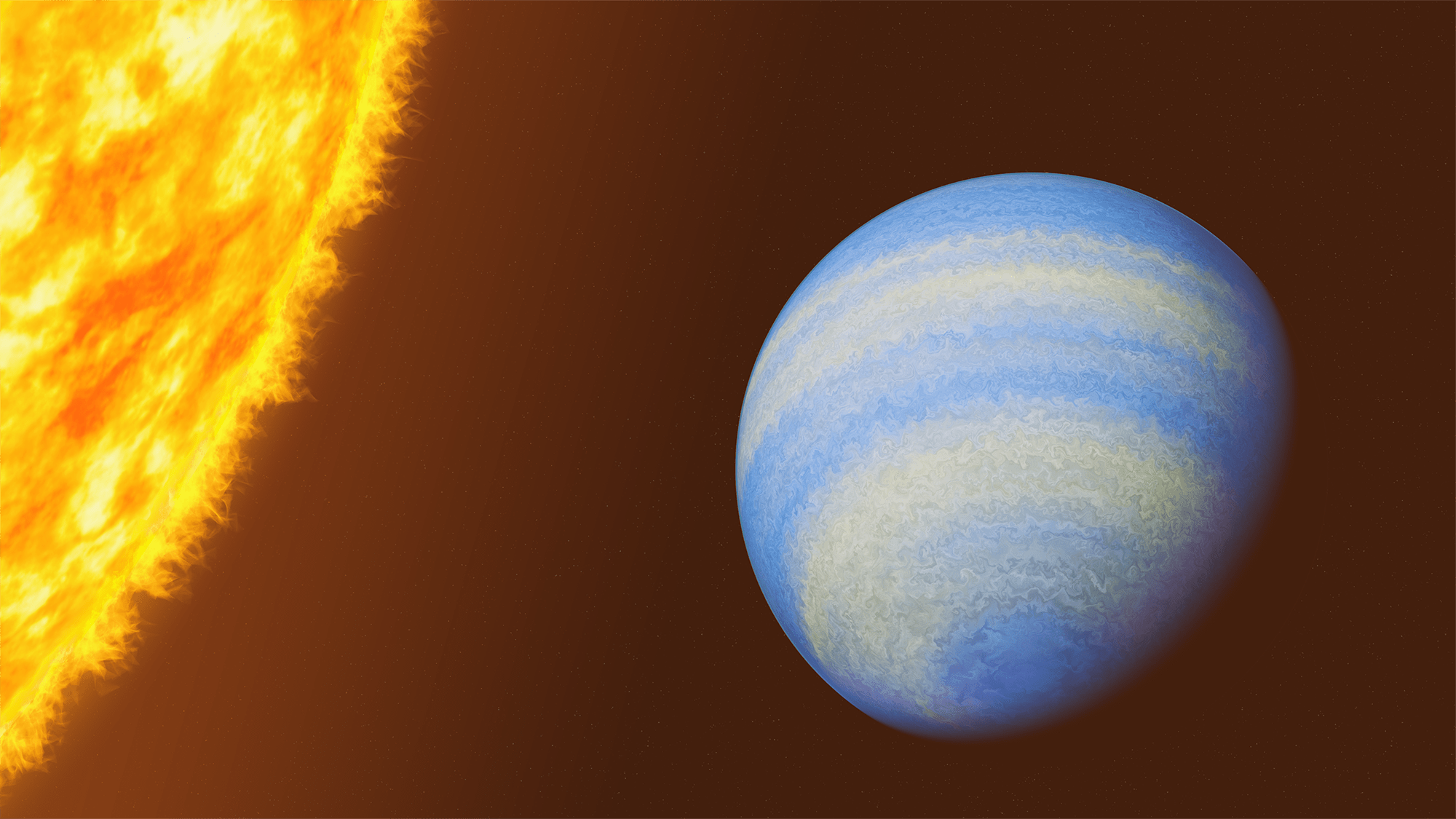

Parts of space might be a bit smelly. The stench of rotten eggs could be wafting off of exoplanet HD 189733 b. This nearby exoplanet known for its tumultuous weather has an atmosphere that is predominantly made of hydrogen sulfide, a molecule that gives off a foul odor.
The presence of this molecule is offering new clues to how sulfur–one of the chemical elements that builds planets–might influence the atmospheres and inner workings of the gas giants outside of our solar system. The findings are detailed in a study published July 8 in the journal Nature.
[Related: This hot Jupiter exoplanet unexpectedly hangs out with a super-Earth.]
Smelly clouds with a chance of glass rain
HD 189733 b is only 64 light years away from Earth, making it the closest “hot Jupiter” outside of our solar system that astronomers can watch as it passes in front of the star it orbits. It has been a benchmark planet for studying exoplanetary atmospheres since it was first discovered in 2005.
It is roughly 13 times closer to its star than Mercury is to our sun and only takes about two Earth days to complete a single orbit. HD 189733 b is a balmy 1,700 degrees Fahrenheit and has intense weather–it rains glass that blows sideways due to 5,000 mile-per-hour winds.

The data for this new study was taken with the James Webb Space Telescope (JWST) and its instruments that can see in infrared light to detect traces of molecules and chemical elements. This allows astronomers to get a sense of what chemicals are present in the exoplanet’s atmosphere since they can’t really take exoplanet atmospheric samples back to Earth.
“Hydrogen sulfide is a major molecule that we didn’t know was there. We predicted it would be, and we know it’s in Jupiter, but we hadn’t really detected it outside the solar system,” study co-author and Johns Hopkins University astrophysicist Guangwei Fu said in a statement. “We’re not looking for life on this planet because it’s way too hot, but finding hydrogen sulfide is a stepping stone for finding this molecule on other planets and gaining more understanding of how different types of planets form.”
Exoplanet beginnings
Sulfur is a crucial element for building more complex molecules. Scientists also need to study sulfur the way they do with nitrogen, carbon, phosphate, and oxygen to get a better grasp on how planets are forged and what they are made from. The JWST is offering a new tool to track hydrogen sulfide and measure sulfur in gas planets outside of our solar system.
“Say we study another 100 hot Jupiters and they’re all sulfur enhanced. What does that mean about how they were born and how they form differently compared to our own Jupiter?” Fu said.
JWST also ruled out the presence of methane in HD 189733 b by using infrared wavelength observations. This new data countered previous claims about that molecule’s abundance in the atmosphere.
“We had been thinking this planet was too hot to have high concentrations of methane, and now we know that it doesn’t,” Fu said.
Metals and mass
The team also used infrared readings to detect that HD 189733 b has levels of heavy metals similar to those on Jupiter. According to Fu, the smaller giant icy planets like Uranus and Neptune have more metals than gas giants like Jupiter or Saturn. The higher metallicities suggest that Uranus and Neptune may have accumulated more ice, rock, and other heavy elements relative to gasses like helium and hydrogen during their early days. Scientists are testing to see if that correlation also holds true for the universe’s exoplanets.
[Related: Newly discovered exoplanet may be habitable (or a Venus-like hellscape).]
“This Jupiter-mass planet is very close to Earth and has been very well studied. Now we have this new measurement to show that indeed the metal concentrations it has provide a very important anchor point to this study of how a planet’s composition varies with its mass and radius,” Fu said. “The findings support our understanding of how planets form through creating more solid material after initial core formation and then are naturally enhanced with heavy metals.”
In future work, the team plans to track sulfur in more exoplanets to determine how high levels of that compound may influence how close they form to their parent stars.
“We want to know how these kinds of planets got there, and understanding their atmospheric composition will help us answer that question,” said Fu.